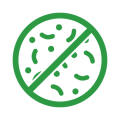
Hy-Care®
CooperVision® Hy-Care® multipurpose contact lens solution effectively cleans your lenses and helps you enjoy a comfortable contact lens-wearing experience day after day.1,2 Hy-Care facilitates comfortable vision with a special ingredient called hyaluronan—a naturally occurring lubricant that is found in the eye.3 For your contact lens care, turn to Hy-Care for a gentle yet effective disinfecting solution.
The features you'll love

Gentle on your eyes with the same pH as tears3

Enhances comfort while providing effective disinfection1,4,5,6,9

Reduces bacteria by 99.9%7

Specially formulated to help remove deposits from soft contacts lenses, including silicone hydrogels4,5,8,9
Unsure which products are best for you?
Take this four question quiz to discover which of our products may best fit your needs.
Find Your Lens







